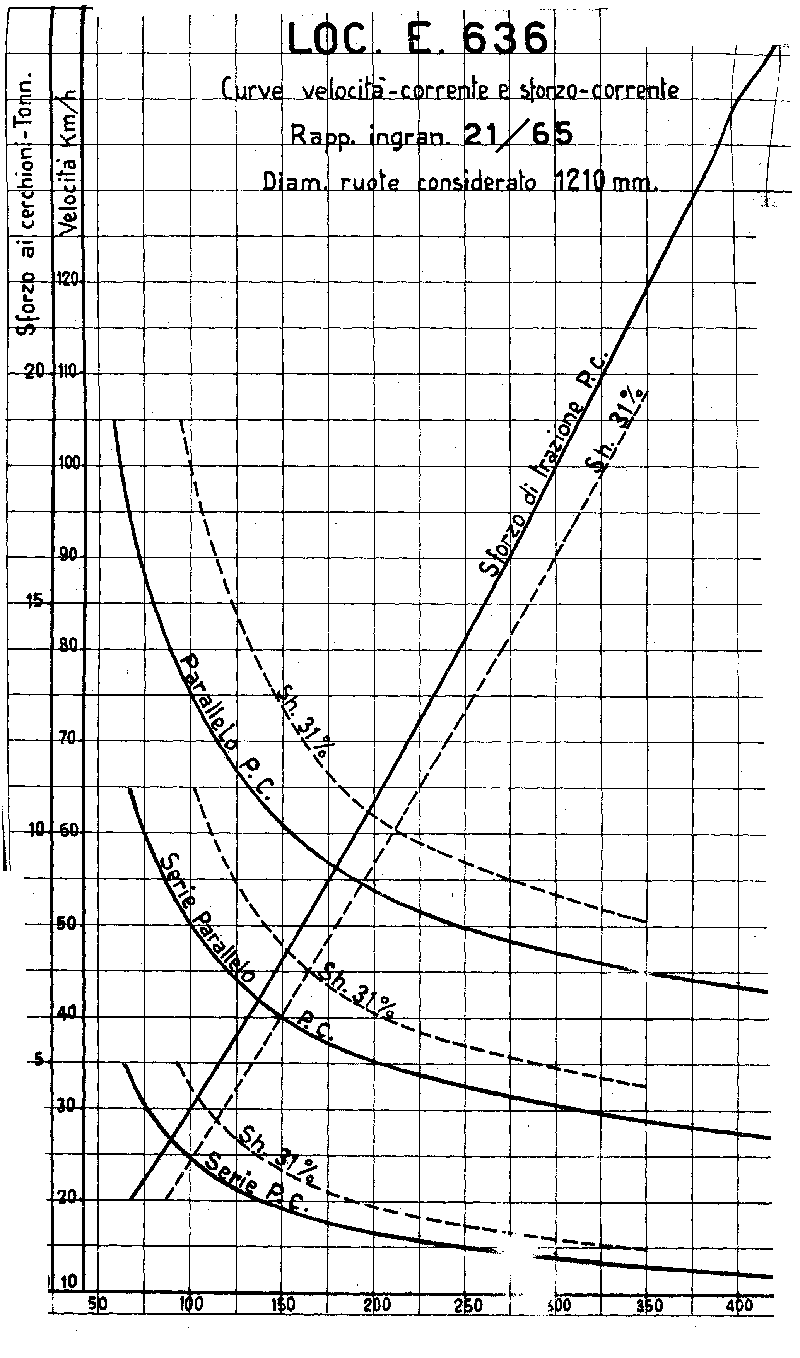I have found in the following graphic the characteristic curve of a locomotive with six DC series wound electric motors at 3000V. As a translation: the y axis describes, on the left, the force in tf (metric tonne-force), and on the right speed in km/h. The x axis describes current in A. The first function from bottom describes the characteristic when the motors are connected between them in series. In the second function there are two branches in parallel of three motors each. In the third function there are three branches in parallel of two motors each. These functions correlate speed and current. The straight line correlates traction force and current. Note that in every case the current axis describes the current that flows through a single branch of motors in each combination. The dashed lines describe each case with a shunt field.
I was trying to come up with a function that for a given voltage, speed and motor combination gives current and traction effort. However I am not familiar with electric circuits and I have had no results.


